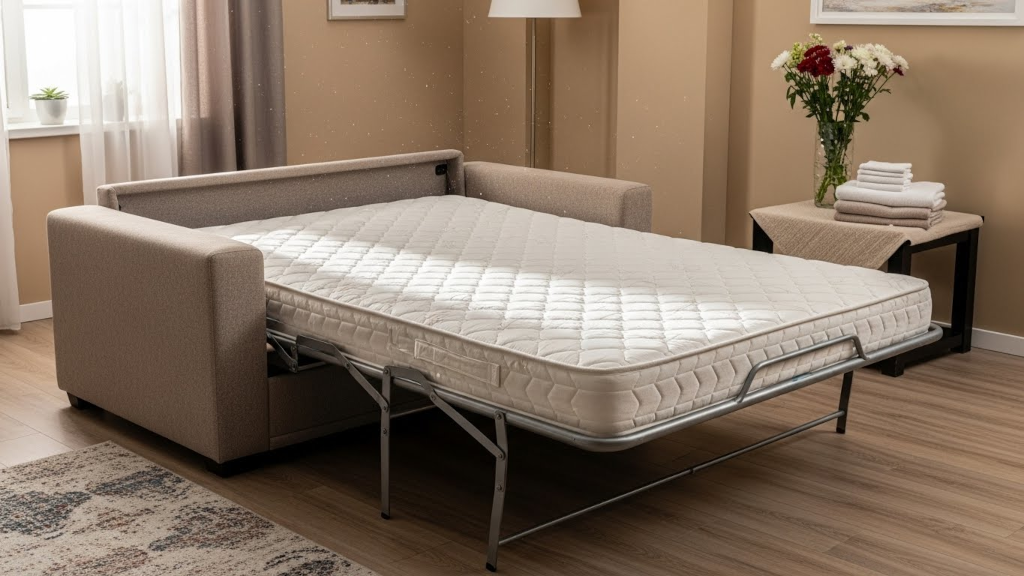A bathroom can look spotless after a full scrub yet still carry an odor that lingers. Many people disinfect surfaces, mop the floor, wipe down mirrors, and take out the trash only to notice a faint musty or sour smell as soon as the room settles. This is frustrating, especially when you feel like you cleaned everything correctly.
The reason is simple. A bathroom can be clean without being odor-free. Standard cleaning removes germs and visible dirt, but odor molecules behave differently. They settle into grout, soft materials, hidden corners, and damp areas where fragrances cannot reach. The smell returns because the source was never neutralized at the molecular level.
With a few easy changes and a quick odor-neutralizing routine, you can remove the underlying cause and keep the bathroom fresh long after you finish cleaning.
The Difference Between “Disinfected” and “Odor Free”
Cleaning products and odor-neutralizing sprays do two separate jobs.
Disinfectants kill bacteria and remove grime. They are effective for hygiene and visual cleanliness, but they do not break down odor molecules. Many cleaning products try to cover lingering smells with fragrance, which only masks the odor. Once the scent fades, the underlying odor returns.
Odor molecules settle differently. They attach to grout lines, fabric shower curtains, floor edges, damp towels, trash areas, and silicone seals around toilets and tubs. These molecules continue releasing smell even when the surface looks clean. Only a true odor-neutralizing spray removes them by bonding with the particles and breaking them down.
A bathroom that is disinfected still needs odor control to feel genuinely fresh.
The Real Sources of Persistent Bathroom Odor
Most lingering smells come from places people clean quickly but not deeply. These areas trap moisture, organic residue, or mildew that continues releasing odor.
Drains
Sink, tub, and shower drains collect residue that stays trapped below the surface. Warm air rises from the drain and brings the odor into the room.
Trash Bins
Even after removing the trash, the micro buildup inside the bin continues to smell. Plastic absorbs odor faster than people expect.
Grout and Floor Edges
Grout holds moisture and absorbs odor molecules. The same happens at floor transitions where water collects.

Shower Curtains
Fabric and vinyl shower curtains trap moisture from every shower. They dry slowly, allowing a musty smell to develop.
Damp Towels and Mats
Towels, bath mats, and robes collect humidity and release odor back into the air even after they feel dry.
Toilet Base and Silicone Seals
Odor settles into the seams, caulk lines, and edges where mops do not reach. These areas need odor neutralization, not just disinfectant.
These hidden sources make a bathroom smell stale even when the counters and floors shine.
Common Mistakes That Lock Odors In
Many cleaning habits unintentionally trap odor instead of removing it. These mistakes keep the scent in place even after freshening up the room.
• Relying on fragrance sprays: Perfume covers the smell for a short time but does not remove odor molecules.
• Closing the door immediately after cleaning: This traps moist air inside and prevents odor from escaping.
• Skipping soft surfaces: Shower curtains, towels, robes, and rugs hold more odor than hard surfaces.
• Ignoring floor transitions: Odor hides where tile meets baseboard or tub.
• Not treating drains: Even clean drains release scent when humidity rises.
Fixing these habits makes odor control much easier.
A Fast Odor Neutralizing Routine After You Clean
Once your bathroom is disinfected, give it a one-minute routine that removes the odor source.
Start with airflow. Leave the door open and turn on the vent fan so air circulates. A short burst of fresh air helps release smell molecules that settle during cleaning.
Spray an odor eliminator lightly around the base of the toilet. This area traps moisture and organic odor inside the silicone or flooring.
Mist the trash can, even if it is empty. Plastic holds scent, and a quick spray resets the bin.
Treat soft items. Lightly mist towels, shower curtains, robes, and rugs so odor molecules do not stay in the fibers.
Spray floor transitions and grout areas where moisture collects. A light application breaks down odor that has settled during the week.
Finally, mist the air lightly. This removes lingering odor molecules instead of adding fragrance.
This routine takes only a minute but removes the hidden cause of bathroom smell.
How Often to Treat and When to Use Spray vs Full Cleaning
Regular cleaning is important, but odor control requires a slightly different schedule. You do not need a full scrub every time. Most bathrooms benefit from a quick odor-neutralizing spray two to four times per week, especially around high-moisture zones.
Use only the spray when:
• You want to refresh the bathroom between deep cleans
• The air feels stale after a shower
• Towels or mats feel slightly musty
• The trash creates a lingering smell
Do a full clean when surfaces are visibly dirty, when the room looks foggy or humid, or when mildew begins forming. After the deep clean, finish with the spray so odor molecules are removed completely.
Over time, this rhythm stops musty smells from returning and keeps the bathroom smelling clean every day of the week.
A Clean Bathroom Should Also Smell Clean
Eliminating odor at the molecular level is the missing step most people overlook. Cleaning removes dirt, but odor-neutralizing sprays remove the hidden source inside fabrics, drains, and tight spaces. This is what makes the bathroom feel fresh long after the cleaning scent fades.
A one-minute pass after your regular routine transforms the room completely. When the odor source is gone, the bathroom stays clean in both appearance and scent.








